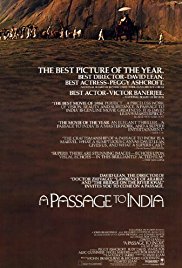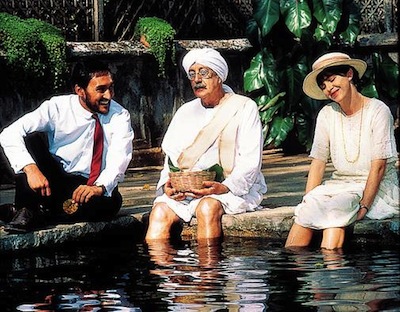The Western colonial empires justified their subjugation of the colonies through the concept of racial superiority and the doctrine of “The Just Rule.” Imperialists claimed that because of the moral and technical superiority of the West it was preordained that Westerners would rule the less developed countries. The ultimate goal of colonialism, according to its proponents, was to lift the “natives” out of savagery. The Imperialist way of thinking is set forth in the following passage written in the early 1800s by British Brigadier General John Jacob:
We hold India, then, by being in reality, as in reputation, a superior race to the Asiatic; and if this natural superiority did not exist, we should not, and could not, retain the country for one week. IF, then we are really a morally superior race, governed by higher motives and possessing higher attributes than the Asiatics, the more the natives of India are able to understand us, and the more we improve their capacity for so understanding, the firmer will become our power. Away, then with the assumption of equality; and let us accept our true position of a dominant race. So placed, let us establish our rule by setting them a high example, by making them feel the value of truth and honesty, and by raising their moral and intellectual powers.
The poet Rudyard Kipling, a great apologist for British Imperialism, put it this way in his poem “White Man’s Burden:”
Take up the White Man’s Burden-
Send forth the best ye breed-
Go bind your sons in exile
To serve your captive’s need;
To wait in heavy harness
On fluttered folk and wild-
Your new-caught, sullen peoples,
Half devil and half child
Take up the White Man’s Burden
And reap his old reward
The blame of those ye better,
The hate of those ye guard-
The cry of hosts ye humour
(Ah, slowly!) toward the light:-
“Why brought ye us from bondage,
Our loved Egyptian night.”
The British began trading with India in 1600, focusing on cotton, indigo, pepper, yarn, sugar, silk and other commodities. At that time, India was ruled by a decaying Muslim empire. British relations with India for 250 years were governed by the British East India Company. In 1750 there was a report that rebellious “natives” in Calcutta had placed British citizens in an airless prison. Robert Clive, a clerk for the British East India Company, mobilized British soldiers to avenge the “Black Hole of Calcutta.” He went on to seize the province of Bengal. Over the next 150 years, the British accumulated power in state after state. After a rebellion in 1857, the British Parliament incorporated India into the British Empire and ruled it directly. The British were able to conquer India for a number of reasons including: the decline of the Mughal Empire, the better arms, discipline, and esprit de corps of the British army, and the British monopoly of sea power.
The reality of British Imperial policy was much different than the theory of “The Just Rule.” The economy of India was made subject to the needs of the British economy. For example, Indian roads and railways were developed so that raw materials needed by British factories could be easily taken from the country and so that expensive finished goods from England could be conveniently distributed. Wealth was systematically drained from India through confiscatory taxes and economic subjugation. British taxes forced peasants to borrow money at high interest rates from money lenders and landlords, virtually enslaving families for generations. Industry was discouraged by Britain’s policy of one-way free trade. Europeans were favored for all government jobs and many Englishmen considered the East to be a career. The British maintained their power by pitting Hindu against Muslim in a policy called “divide and rule.” This policy exacerbated tensions between the religious factions in India and contributed to decades of communal strife, countless deaths, and the eventual partition of India into two separate countries, India and Pakistan.
E.M. Forster lived in India for two years working as a paid secretary at a Hindu court. He had Indian friends and lovers. (Forster was homosexual.) He was anti-imperialist based on a humanist critique of imperialism. This critique is argued forcefully and with telling effects in A Passage to India. Forster was a supporter of Gandhi’s Non-Cooperation movement of the early 1920s. Publication of A Passage to India made Forster very popular in India. During the Second World War he contributed to a BBC program called “English to India.” His participation is credited with making the program extremely popular in India.



